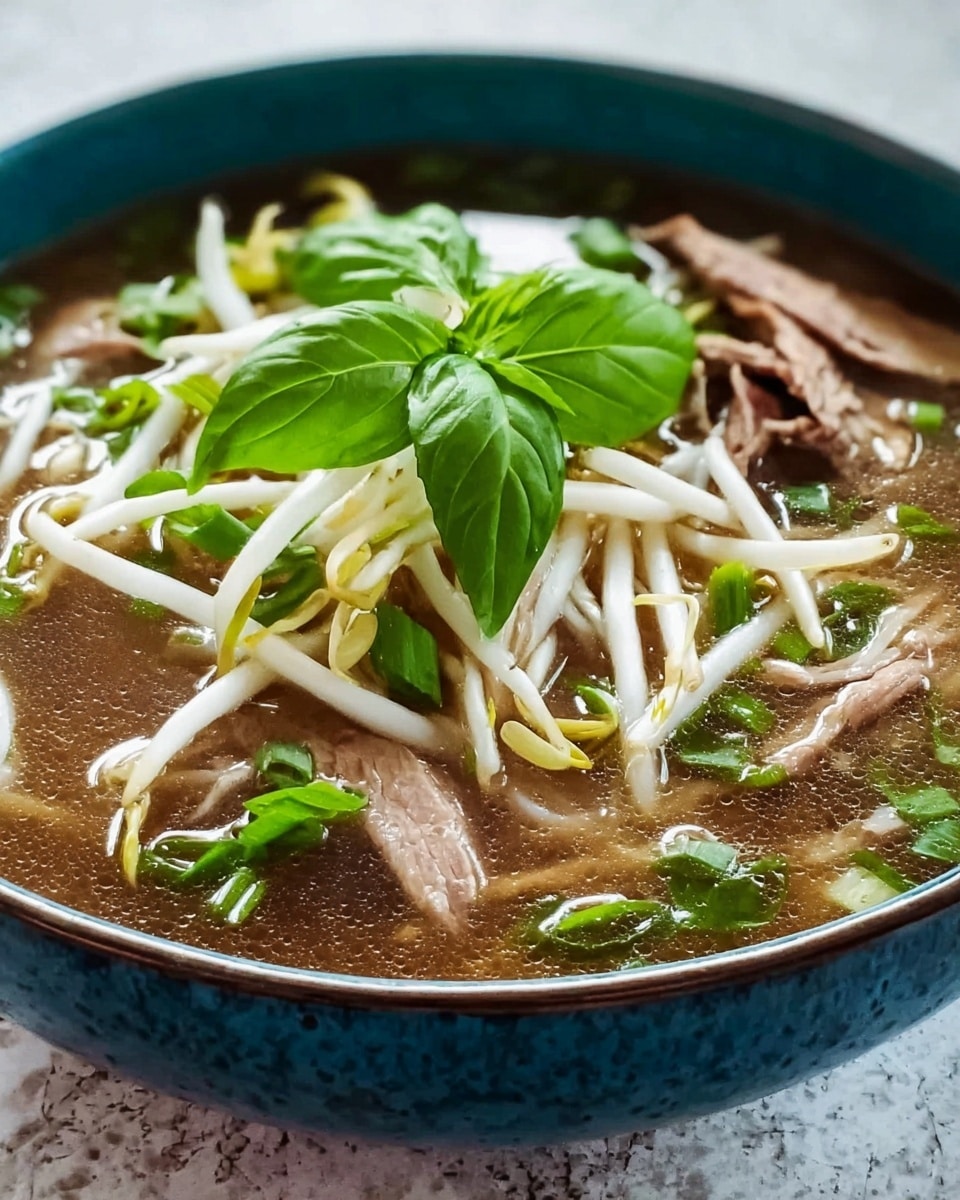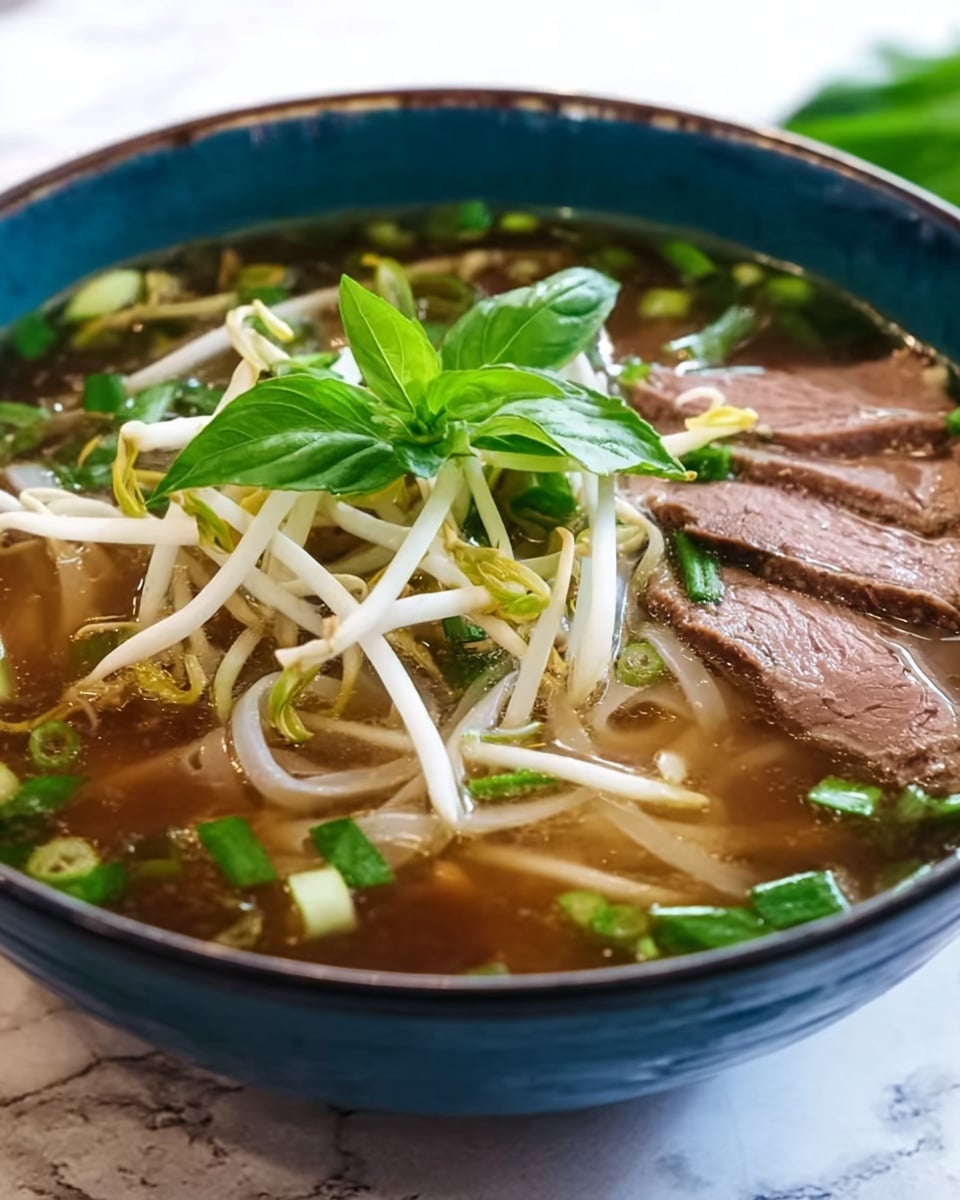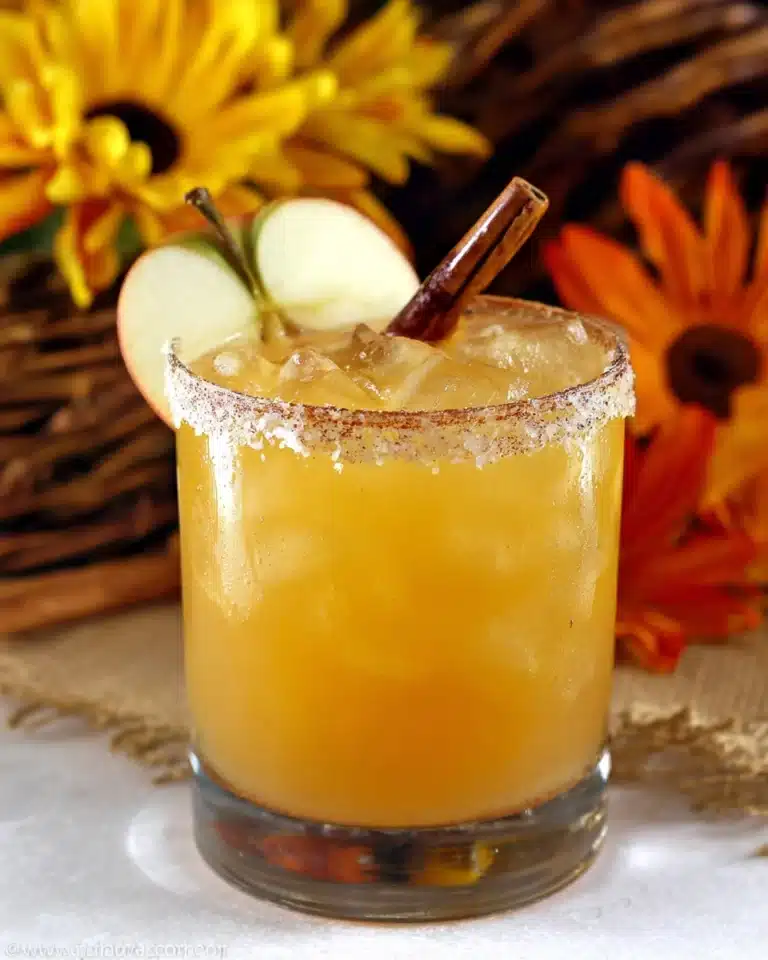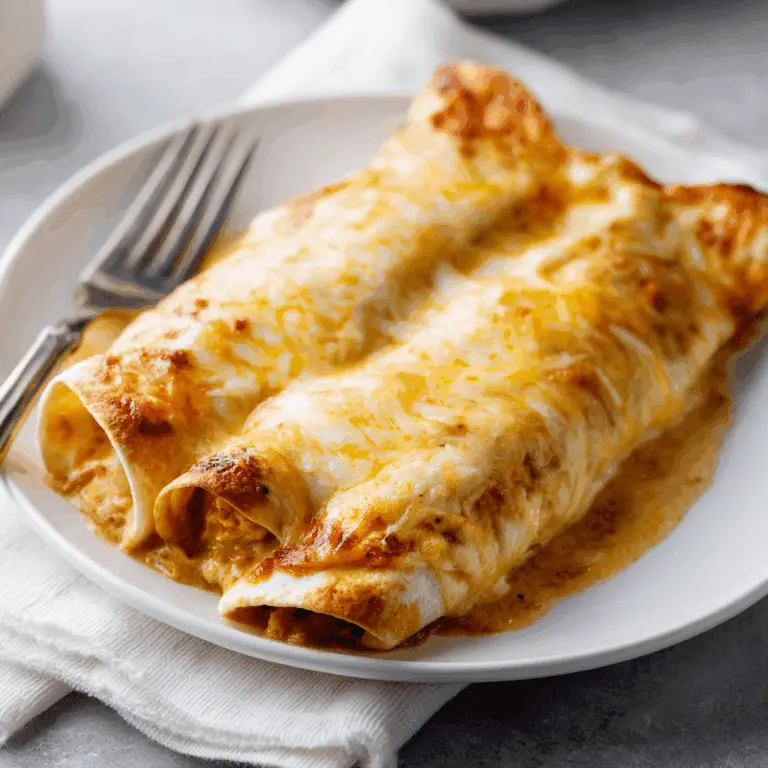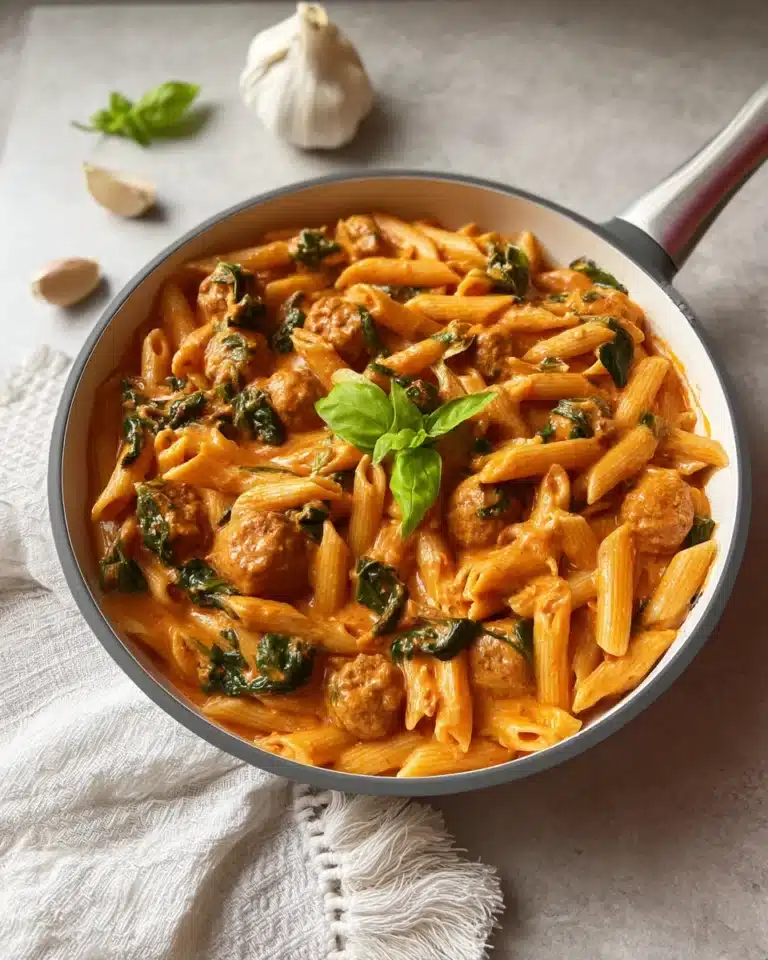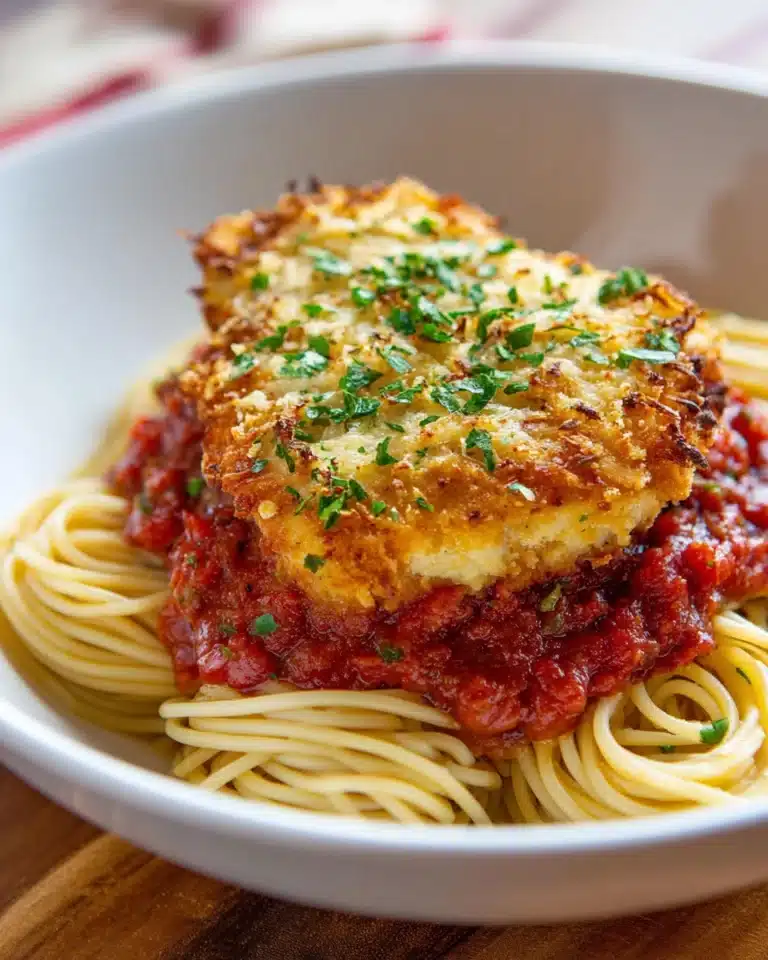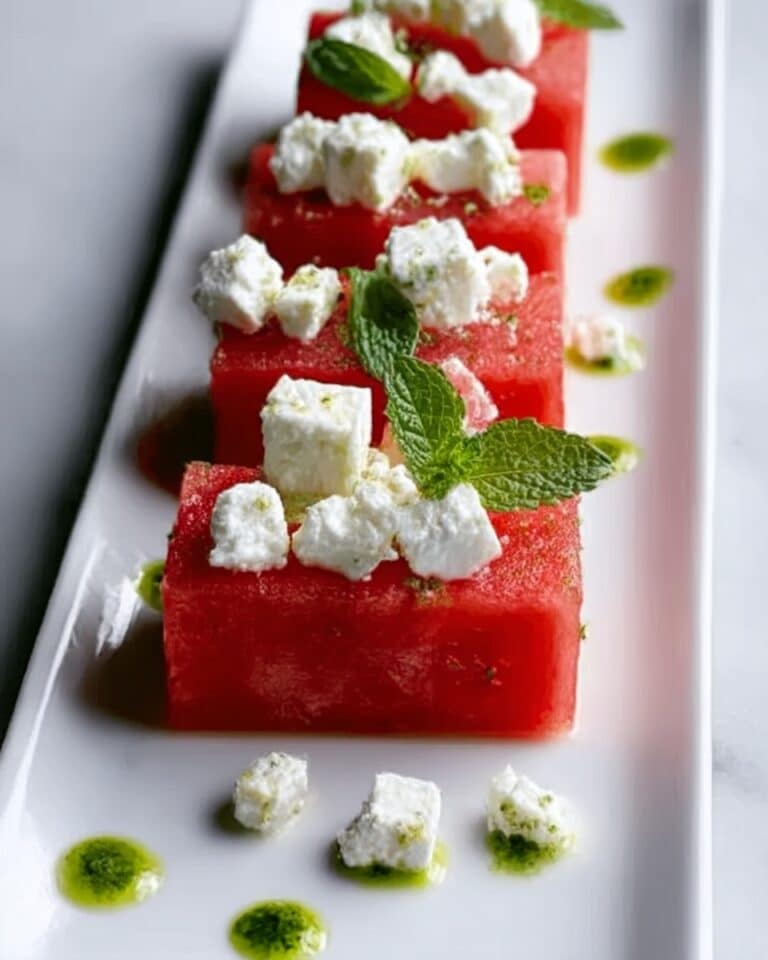If you have ever craved the comforting, aromatic warmth of authentic pho but shied away because it seemed complicated, then let me introduce you to My Easy Version – Beef Pho Recipe. This simplified approach captures the soul of traditional Vietnamese pho with an accessible, home-friendly technique that brings rich beef flavors, herbal freshness, and silky rice noodles together in a bowl made for comfort and joy. Whether you’re new to pho or a longtime fan, this recipe is your new go-to for a satisfyingly delicious meal that fills your kitchen with inviting aromas and your heart with happy memories.
Ingredients You’ll Need
Each ingredient in this recipe is carefully chosen to build layers of flavor and texture, making the dish truly special without any fuss. From the rich beef bones to the vibrant fresh herbs, every element plays a crucial role in bringing My Easy Version – Beef Pho Recipe to life.
- Beef neck bones or shank bones (3 pounds): These are the flavor powerhouses that create a deep, rich broth packed with beefy goodness.
- Beef fillet or beef shave (1 pound): Tender slices that quickly cook in hot broth, adding a melt-in-your-mouth texture.
- Turnips (2, sliced in big chunks): Adds natural sweetness and subtle earthiness to the broth’s base.
- Ginger (1, roasted): Roasting ginger enhances its spicy, aromatic character, which lifts the overall broth.
- Onion (1 large, roasted): Brings a caramelized sweetness that balances the savory beef.
- Rice noodles (1 package, cooked and drained): The silky strands that soak up all the savory broth flavor.
- Add-in vegetables: Cilantro, basil, green onions, sliced onions, bean sprouts, and jalapeño – these fresh touches add brightness, heat, and crunch.
- Soy sauce (3 tbsp): Provides umami depth and seasoning that enriches the broth’s complexity.
- Salt and pepper (to taste): To perfectly season and awaken all the flavors harmoniously.
How to Make My Easy Version – Beef Pho Recipe
Step 1: Build Your Flavorful Broth
Start by filling a large pot with water—about three-quarters full or just above halfway. Toss in your beef neck or shank bones, roasted ginger, roasted onion, and chunky turnip slices. This initial combination plants the foundation for a deeply flavored broth brimming with comforting aromas and layered tastes.
Step 2: Season the Broth
To enhance the natural flavors, add 3 tablespoons of soy sauce. This ingredient works wonders to introduce a savory umami kick that makes your pho broth irresistibly rich without overwhelming the delicate balance.
Step 3: Bring to a Boil and Skim
Bring the mixture to a rolling boil, then patiently skim off any foam or impurities that rise to the surface. This step is key for achieving a clear, pristine broth that looks just as good as it tastes.
Step 4: Slow-Cook for Depth
Reduce the heat to a gentle simmer and let the broth cook slowly for 1 to 2 hours. This slow-cooking process allows the flavors to meld beautifully, with the beef bones releasing their gelatin and essence, resulting in that signature hearty and fragrant broth.
Step 5: Prepare the Noodles
While your broth is cooking, prepare the rice noodles according to the package instructions. Drain them well and set aside. These silky noodles will serve as the perfect canvas, soaking up all the savory goodness when your pho is assembled.
Step 6: Assemble Your Bowl
In a large bowl, layer the cooked rice noodles, fresh beef fillet slices, and your chosen add-in vegetables: green onions, sliced onions, jalapeño, bean sprouts, cilantro, and basil. The arrangement of fresh and cooked elements ensures a harmonious bite every time.
Step 7: Pour Broth and Serve
Heat your broth to piping hot, then ladle it generously over the noodles and beef in the bowl. The hot broth will gently cook the thinly sliced beef fillet, creating that perfect tender texture pho lovers crave. Now it’s ready to enjoy!
How to Serve My Easy Version – Beef Pho Recipe
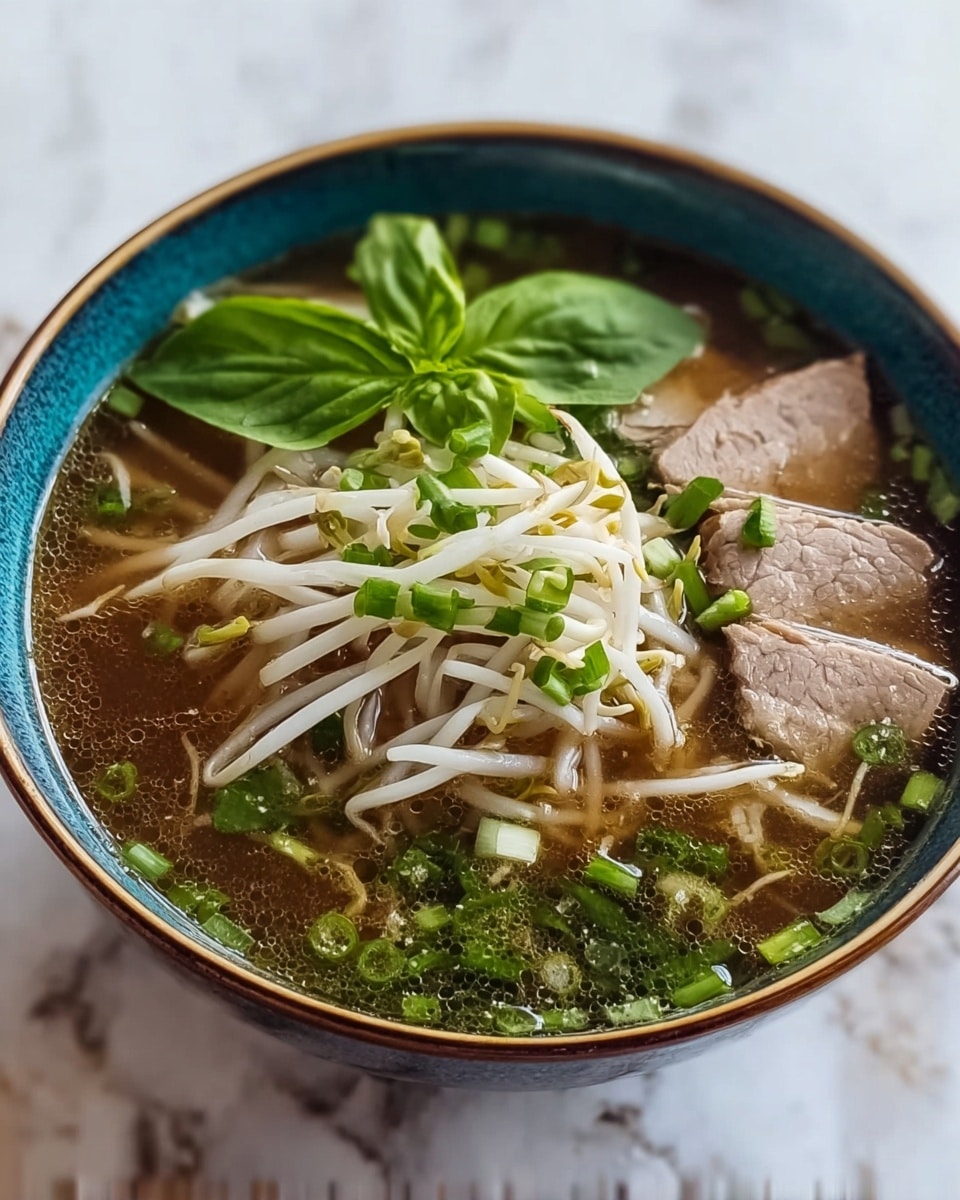
Garnishes
Don’t underestimate the power of fresh garnishes; they truly elevate the pho experience. Add bright sprigs of cilantro and fragrant basil, crisp bean sprouts, thin slices of jalapeño for heat, and fresh lime wedges for a zesty kick. Each bite becomes a beautiful balance of textures and flavors!
Side Dishes
Enhance your pho meal with light, complementary sides like simple spring rolls, pickled vegetables, or even a fresh cucumber salad. These add a refreshing crunch or tang that contrasts beautifully with the warm, rich broth.
Creative Ways to Present
For a dinner party, present the broth in a teapot and serve the noodles and toppings on a platter, allowing guests to personalize their bowls. This interactive approach makes mealtime fun and connects everyone over the shared joy of your homemade pho.
Make Ahead and Storage
Storing Leftovers
Store leftover broth in a sealed container in the refrigerator for up to 3 days. Keep the noodles and fresh toppings separate to maintain their texture and freshness. When ready to eat, simply reheat the broth and assemble your bowl.
Freezing
The broth freezes beautifully, making it a perfect make-ahead meal base. Freeze it in portioned containers and thaw in the refrigerator overnight before reheating. Noodles and fresh herbs do not freeze well, so plan to prepare or add those fresh when serving.
Reheating
Gently reheat broth on the stove to a simmer—avoid boiling vigorously to preserve flavor. Add fresh noodles and toppings when serving for the best pho experience that feels just like freshly made.
FAQs
Can I use other cuts of beef for this pho?
Absolutely! While beef neck bones or shank bones give the best flavor for the broth, you can also use oxtail or beef marrow bones. For the meat, thinly sliced sirloin or brisket works wonderfully as well.
Is it necessary to roast the onion and ginger?
Roasting the onion and ginger adds a beautifully caramelized sweetness and smoky depth to the broth that’s hard to duplicate otherwise. It’s a simple step that elevates the whole dish.
Can I make this recipe vegetarian or vegan?
While this specific recipe centers on beef, you can create a vegetarian version by using vegetable broth and substituting with mushrooms and tofu for that umami richness.
How spicy is the pho with jalapeño?
The jalapeño adds a nice mild heat that you can control by the amount used or by removing seeds. Feel free to adjust to your spice tolerance or offer extra on the side for guests.
What’s the best way to reheat pho without losing flavor?
Reheat the broth gently on the stove rather than microwaving. Keep noodles and fresh herbs separate until serving to preserve their textures and vibrant flavors.
Final Thoughts
Sharing My Easy Version – Beef Pho Recipe feels like passing on a treasured secret—it’s that good and comforting. This recipe brings all the magic of traditional pho into a wonderfully approachable form, perfect for cozy nights or impressing friends with your culinary skills. I can’t wait for you to make it, savor it, and fall in love with pho all over again.
Print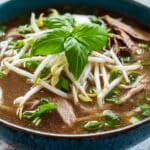
My Easy Version – Beef Pho Recipe
- Prep Time: 15 minutes
- Cook Time: 1 to 2 hours
- Total Time: 1 hour 15 minutes to 2 hours 15 minutes
- Yield: 6 to 6 servings
- Category: Soup
- Method: Stovetop
- Cuisine: Vietnamese
Description
This easy and comforting Beef Pho recipe brings the rich flavors of traditional Vietnamese pho to your kitchen with simple ingredients and straightforward steps. Made with slow-cooked beef neck bones and aromatic roasted ginger and onions, this dish creates a deeply flavorful broth served over tender rice noodles and fresh herbs for a wholesome and satisfying meal.
Ingredients
Broth Ingredients
- 3 pounds beef neck bones or shank bones
- 2 turnips, sliced into large chunks
- 1 ginger root, roasted
- 1 large onion, roasted
- 3 tablespoons soy sauce or fish sauce
- Salt and pepper to taste
Main Ingredients
- 1 pound beef fillet or beef shave
- 1 package rice noodles, cooked and drained
Add-ins and Garnishes
- Cilantro
- Basil
- Green onions
- Sliced onions
- Bean sprouts
- Jalapeño, sliced
Instructions
- Prepare the broth: Fill a large pot with water, about three-quarters or just above half full. Add the beef neck bones, roasted ginger, roasted onion, and turnips to the pot.
- Add seasoning: Stir in 3 tablespoons of soy sauce or fish sauce to the pot to imbue the broth with depth and umami flavor.
- Bring to a boil: Heat the mixture until it reaches a rolling boil, then carefully skim and remove any foam or impurities that rise to the surface to keep the broth clear.
- Slow-cook the broth: Lower the heat to a gentle simmer and cook slowly for 1 to 2 hours, allowing the flavors to concentrate and develop a rich taste. Season with salt and pepper according to your preference.
- Prepare the noodles: While the broth is simmering, cook the rice noodles according to the package instructions. Drain them well and set aside.
- Assemble the bowl: In large serving bowls, add the cooked rice noodles, thinly sliced raw beef fillet or beef shave, green onions, sliced jalapeño, bean sprouts, sliced onions, cilantro, and basil.
- Pour hot broth over: Ladle the steaming hot broth directly over the beef and noodles, which will gently cook the thin beef slices.
- Serve and enjoy: Allow the flavors to meld briefly and serve your bowl of homemade beef pho immediately for a warm, nourishing meal.
Notes
- Roasting the ginger and onion before adding them to the pot enhances the broth’s aroma and flavor.
- You can substitute soy sauce for fish sauce if preferred, but fish sauce is more traditional for authentic pho.
- Adjust simmer time based on how concentrated you want the broth; longer simmer yields a richer flavor.
- Beef fillet or beef shave should be sliced very thinly to cook quickly in the hot broth.
- Get creative with garnishes such as lime wedges or hoisin sauce for additional flavor layers.

